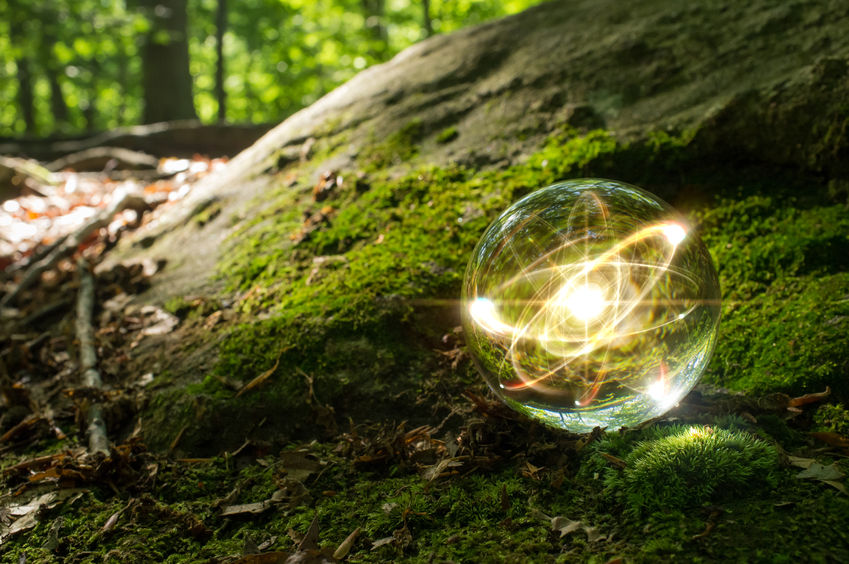Nuclear energy is the largest so called clean energy source in the United States. It generates more than 56 percent of America’s emission-free electricity. That is nearly three times more than hydropower, 3.5 times the amount generated by wind, and 18.5 times the amount solar energy provides. It generates power through fission, which is the process of splitting uranium atoms to produce energy. The heat released by fission is used to create steam that spins a turbine to generate electricity. It’s land footprint is small, only a tiny fraction of the land that is required for wind turbines or solar farms is needed. A typical 1,000-megawatt nuclear facility in the United States sits on less than one square mile to operate. An equivalent wind farm needs 350 square miles of wind turbines to produce the same amount of electricity and solar photovoltaic plants require half that amount. To put that in perspective, you would need more than 3 million solar panels to produce the same amount of power as a typical 1000 mega-watt commercial nuclear reactor or more than 1000, 2.5 megawatt wind turbines whose average efficiency supplies only 30% of their maximum capability.
It’s waste is about 1 million times less than that of traditional coal fired power plants The amount of used nuclear fuel is very small. All of the used nuclear fuel produced by the U.S. nuclear energy industry over the last 60 years could fit on a football field at a depth of less than 30 feet. France has half as many reactors as the US, 56 to be exact, and their waste disposal problem is minimal. That waste is commonly reprocessed and recycled, although the United States does not currently do this. While Yucca Mountain in Nevada was built to contain all US nuclear waste deep underground, politics in Nevada shut it down. Currently all waste is held in cement and steel casks or pools of water but there is hope that Yucca Mountain depository could be reopened.
France gets 75% of its power from its nuclear plants and is the largest electricity exporter in Europe., whereas it had been a major importer until the late 1970s when they began building their nuclear plants.
The notion that the atomic bombs dropped on Hiroshima and Nagasaki would turn the two cities into wastelands has been debunked, but it doesn’t seem to have changed many minds. Both cities are booming today and although the initial bombs killed thousands people, the fear that future generations would be genetically mutated has proven completely false. The same is true for the thousands expected to contract cancer after the Chernobyl disaster in Russia. That was caused by foolish workers doing an unauthorized experiment on the uncovered reactor. The government has studied the accident for decades and now know for sure that less than 100 people actually died from either the fire or radiation.
There have been a few leaks over the years, most notably at Three Mile Island in the US but no one has died of radiation poisoning as a result.
In the case of Fukushima, the plant was wrecked because an earthquake at sea created a tsunami flooding the pumps supplying cooling water to the reactor. The rumors began immediately that not only would tens of thousands of Japanese citizens succumb to radiation, but the Pacific Ocean would be turned into a polluted body of water. Many thought a cloud of nuclear dust was headed to our Pacific Coast. None of those things happened or could have happened.
In fact, according to studies, nuclear workers who have been exposed to small doses of radiation were found to have a reduced risk of getting cancer. This was proven beyond any doubt years after the two bombs were dropped in Japan. At the outermost ring around the cities where radiation could be measured to be extremely low, cancer rates were found to be below the average for all of Japan.
Currently over 200 nuclear power plants are in some stage of construction around the world but only two in the US because unnecessary construction requirements make them 3 times more costly but no safer than those elsewhere in the world. Clearly natural gas is so abundant in the US that presently nuclear power can not compete. But if we are not building some nuclear power plants we will lose our high level of technology to other counties along with well trained nuclear engineers. It is surely something to think about
In his book “Underexposed: What if Radiation Is Actually Good for You?”, Ed Hiserodt made the case that not only are low levels of radiation not dangerous, but such lower levels can actually provide positive health benefits to human health.
